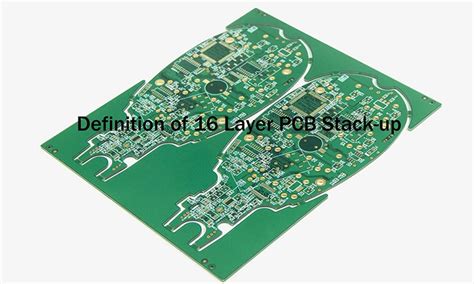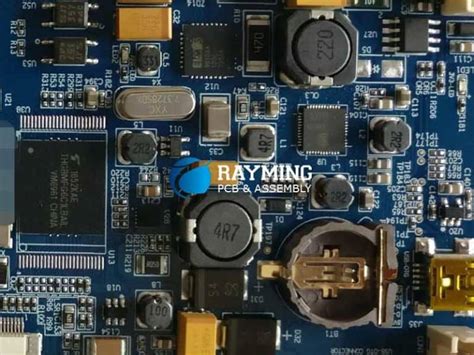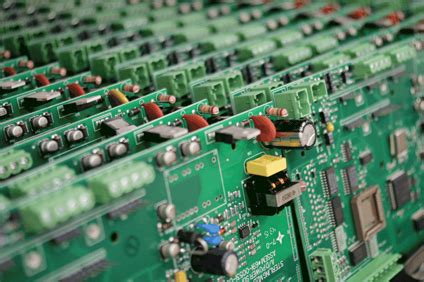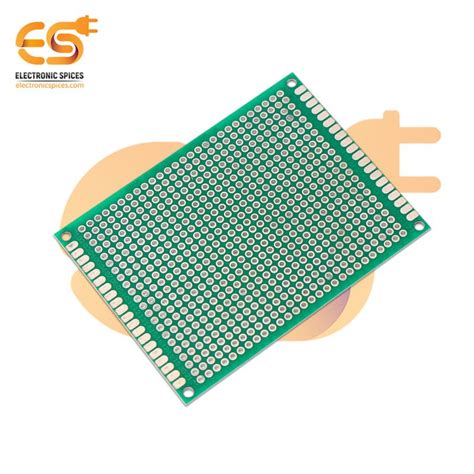Top 16 Layer PCB Manufacturers for High-Performance Designs
Key Takeaways
When navigating the landscape of 16-layer PCB manufacturing, understanding the capabilities and offerings of various PCB manufacturing companies is crucial for your complex electronic projects. These manufacturers are not only equipped to handle the intricate designs associated with 16-layer printed circuit boards but also provide innovative solutions that enhance performance. Key features to consider when evaluating these companies include their ability to employ advanced materials, precision fabrication techniques, and robust testing processes that ensure high reliability. You should also take into account the PCB manufacturing cost, which can vary significantly based on specifications, volume, and the technologies utilized. Engaging with well-established PCB manufacturing businesses can help you mitigate risks associated with production delays and quality inconsistencies while aligning with your project timelines and budgets. Additionally, gaining insights from customer testimonials and case studies can provide a clearer picture of each manufacturer’s strengths and help you make informed decisions regarding your PCB requirements.
Top 16 Layer PCB Manufacturers Worldwide
In the realm of advanced electronics, 16-layer PCBs are crucial for enabling high-performance designs, and understanding the landscape of pcb manufacturing is essential for selecting the right partner. You will find that numerous pcb manufacturing companies specialize in producing these intricate circuits, offering a range of capabilities that cater to your specific needs. When considering your options, it’s important to evaluate factors such as technological expertise, production capacity, and the overall pcb manufacturing cost. Leading manufacturers often leverage state-of-the-art equipment and innovative methodologies to ensure high reliability and performance in their products. You may want to explore manufacturers known for their adherence to stringent quality standards, as this will significantly affect the performance of your complex electronic projects. Engaging with reputable pcb manufacturing businesses can also provide valuable insights into emerging trends and technologies in the field, helping you make informed decisions for future projects. By choosing wisely amongst these reputed manufacturers, you can position your designs for success in a competitive market.
Key Features of High-Performance 16 Layer PCBs
When it comes to 16-layer PCBs, several key features distinguish high-performance designs from standard offerings. Firstly, layer count is crucial; more layers allow for complex routing, which is essential for advanced electronic applications. In your projects, you will appreciate the ability of these PCBs to support high-speed signal transmission while minimizing signal loss and interference.
Another significant aspect is the material quality used in PCB manufacturing. High-performance 16-layer PCBs often utilize advanced materials such as FR-4, which can withstand higher temperatures and meet stringent electrical performance standards. The design intricacies, such as controlled impedance and blind/buried vias, enhance overall performance significantly.
The manufacturing processes employed by leading PCB manufacturing companies are also vital. Techniques like advanced laser drilling for vias and precise photolithography ensure that your PCB designs meet exact specifications, which is critical for maintaining functionality in compact environments.
Here’s a summary table comparing features of high-performance 16-layer PCBs:
| Feature | Description |
|---|---|
| Layer Count | Supports complex routing |
| Material Quality | Uses high-grade FR-4 |
| Signal Integrity | Minimizes loss and interference |
| Advanced Processes | Laser drilling, photolithography |
“Investing in high-quality PCBs can significantly reduce long-term costs associated with performance issues.”
Understanding these features not only enhances your knowledge but also informs your decisions regarding pcb manufacturing cost and selecting the right pcb manufacturing business for your project needs. As you evaluate various manufacturers, consider their expertise in delivering these essential attributes that contribute to the success of your electronic designs.
Comparative Analysis of Leading 16 Layer PCB Manufacturers
When selecting 16-layer PCB manufacturers, it is essential to consider various factors that influence both quality and performance. The top PCB manufacturing companies stand out by employing advanced technologies, which enhance their capabilities in pcb manufacturing and deliver high-performance designs. Each manufacturer has its strengths, such as innovative material usage, precision in lay-up processes, and a robust quality assurance system. You should also evaluate the pcb manufacturing cost, as it can vary significantly among manufacturers based on their production processes and technology. Engaging with a reputable pcb manufacturing business can lead to substantial advantages in terms of reliability and efficiency for your complex electronic projects. As you analyze these leading manufacturers, look for their familiarity with industry standards, customer service quality, and turnaround times—all critical elements that impact your project’s success in the competitive landscape of electronic design.
Innovative Technologies in 16 Layer PCB Production
The pcb manufacturing landscape is evolving rapidly, especially in the realm of 16-layer PCBs. These advanced boards have become essential for high-performance electronic designs, necessitating the adoption of cutting-edge technologies. One such innovation is the advancement in layer stacking techniques, which enhance the integrity and reliability of circuits by optimizing signal integrity and minimizing electromagnetic interference. Moreover, the use of automated pcb manufacturing processes ensures greater efficiency and precision, enabling manufacturers to maintain quality standards while keeping costs manageable.
Additionally, innovations in materials, such as high-frequency substrates and advanced laminates, play a crucial role in enhancing the performance characteristics of 16-layer PCBs. These materials not only support higher speeds but also improve thermal management capabilities. As you explore various pcb manufacturing companies, pay special attention to their investment in research and development, which underlies their ability to harness these innovative technologies effectively.
In terms of production speed and scalability, some manufacturers have integrated digital fabrication methods, which allow for rapid prototyping and shorter lead times without compromising quality. As you delve into the specifics of pcb manufacturing cost, consider how these advanced technologies contribute to long-term savings by reducing failure rates and enhancing product reliability.
By understanding these innovative approaches within the pcb manufacturing business, you can make informed decisions when selecting a manufacturer for your complex electronic projects. This will not only improve your project’s overall performance but could also lead to a more effective use of resources in design and production phases.
Industry Applications for 16 Layer PCBs
In today’s rapidly evolving technological landscape, 16-layer PCBs play a crucial role in various industry applications. These advanced printed circuit boards are particularly beneficial in sectors such as telecommunications, aerospace, and medical devices, where performance and reliability are of utmost importance. The complex designs enabled by pcb manufacturing processes allow for greater integration of components within limited space, making them ideal for high-density applications. Companies focusing on pcb manufacturing often highlight their capabilities to meet the stringent requirements demanded by specialized industries. For instance, in telecommunication, the demand for faster data transfer rates and greater bandwidth has resulted in increased reliance on 16-layer PCBs, which can effectively support high-frequency signals. Additionally, the aerospace sector significantly benefits from these boards due to their lightweight yet robust construction, essential for reducing weight while ensuring durability. Furthermore, in the medical field, precise and reliable electronic components are critical; hence, pcb manufacturing companies strive to adhere to strict healthcare standards to produce high-performance designs capable of supporting advanced diagnostic equipment and monitoring devices. Engaging with reputable pcb manufacturing companies ensures that your complex electronic projects are backed by cutting-edge technology and expert skillsets essential for achieving optimal performance. As you explore options for your projects, keep in mind these diverse applications that illustrate the versatility and importance of 16-layer PCBs in modern technological advancements. Understanding these applications can help you make informed decisions about your project’s needs while considering factors such as pcb manufacturing cost and overall business strategy within this sector.
Customer Testimonials and Case Studies from Top Manufacturers
When exploring the world of 16-layer PCBs, it’s insightful to delve into real experiences shared by customers of leading pcb manufacturing companies. Numerous testimonials highlight how these firms have effectively met the requirements for high-performance designs. For instance, a prominent tech company praised a manufacturer for their exemplary attention to detail and ability to adapt designs without compromising quality, showcasing how pcb manufacturing can pivot in response to client needs. Another case study focuses on a consumer electronics brand that partnered with a notable pcb manufacturing business to develop a complex design, underscoring not only the quality of the product received but also the competitive pcb manufacturing cost they managed to achieve. Such testimonials not only emphasize the strengths of top manufacturers but also provide reassurance that selecting the right partner can lead to successful outcomes in challenging electronic projects. Whether you seek advanced technologies or competitive pricing, these real-world stories offer valuable insights into how you can leverage expertise from leading pcb manufacturing companies for your unique business requirements.
Cost Considerations for High-Performance 16 Layer PCBs
When diving into the realm of 16-layer PCBs, understanding the pcb manufacturing cost is crucial for ensuring your high-performance designs remain within budget. PCB manufacturing companies often face varying costs based on factors such as material selection, layer complexity, and production volume. For instance, specialized materials that enhance performance may lead to higher expenditures, but they can ultimately provide better longevity and reliability in complex electronic applications. Additionally, the scale of production plays a significant role; higher volumes may reduce costs per unit due to economies of scale. It’s also essential to consider the overall pcb manufacturing business environment, as fluctuations in raw material prices and technological advancements impact pricing structures. As you evaluate potential pcb manufacturing partners, take note of the balance between cost and quality; opting for a manufacturer with a strong reputation for delivering high-performance 16-layer PCBs might incur an upfront investment but could save you costs related to failures or redesigns in the long run.
Future Trends in 16 Layer PCB Manufacturing
As we look towards the future, the landscape of 16-layer PCB manufacturing is poised to evolve rapidly. With the advent of new technologies, you can expect a shift towards enhanced automation in the pcb manufacturing process, which will likely improve efficiency and reduce lead times. The integration of smart manufacturing techniques, such as the use of data analytics and Internet of Things (IoT) applications in production lines, is set to revolutionize how pcb manufacturing companies operate. This progression will also facilitate improved quality control measures, ensuring that every unit adheres to stringent performance and reliability standards.
Another significant trend is the increasing demand for miniaturization and heightened performance in electronic devices. With various sectors driving this requirement—particularly in telecommunications, automotive, and medical devices—you’ll find that pcb manufacturing cost factors evolve accordingly. Manufacturers will need to strike a balance between advanced features and cost-effectiveness while addressing the complexities associated with designing stacked layers effectively.
Moreover, sustainability will play an essential role in shaping the future of pcb manufacturing business. As environmental concerns gain traction across industries, manufacturers are being compelled to adopt more eco-friendly materials and processes. This shift not only supports global sustainability initiatives but may also enhance brand reputation among consumers who prioritize environmentally responsible practices.
In summary, understanding these emerging trends can better prepare you to navigate the competitive landscape of 16-layer PCB manufacturing, ensuring your electronic projects leverage advanced technologies while remaining mindful of cost and sustainability aspects.
Conclusion
In summary, choosing the right 16-layer PCB manufacturer is crucial for achieving optimal performance in your electronic projects. Innovative techniques and advancements in PCB manufacturing have led to enhanced capabilities in designing complex circuits that require a multilayer structure. As you consider various pcb manufacturing companies, it’s important to evaluate their expertise and experience, particularly in producing high-performance designs. You should also take into account the factors that influence pcb manufacturing cost, such as materials, technology used, and lead times. By understanding these elements, you can make informed decisions that align with your project’s specifications and budget, ultimately supporting your pcb manufacturing business objectives. Before finalizing a manufacturer, consider reaching out for customer testimonials, case studies, and clarity on their production processes to ensure they meet your requirements for quality and efficiency.
FAQs
What is a 16-layer PCB?
A 16-layer PCB consists of 16 layers of conductive and insulating materials, allowing for complex circuit designs and advanced functionality in electronics. This technology is essential for high-performance applications where space and performance are critical.
Why should I choose a specialized manufacturer for 16-layer PCBs?
Opting for specialized pcb manufacturing companies ensures that you receive products that meet rigorous quality standards. These manufacturers typically invest in advanced technologies and have expertise in handling the unique challenges presented by multi-layer designs.
What factors affect the cost of PCB manufacturing?
The pcb manufacturing cost can vary based on several elements, including the complexity of the design, materials used, production volume, and additional services such as assembly or testing. Understanding these factors is crucial when planning your pcb manufacturing business.
How can I assess the capabilities of PCB manufacturers?
You should evaluate manufacturers based on their technology, production capacity, certifications, and customer reviews. Look for those with proven records in delivering high-quality pcb manufacturing, particularly with complex multi-layer configurations.
What industries benefit from 16-layer PCBs?
Industries such as telecommunications, aerospace, automotive, and medical devices frequently utilize 16-layer PCBs, owing to their ability to support high-density packaging and improved signal integrity.






